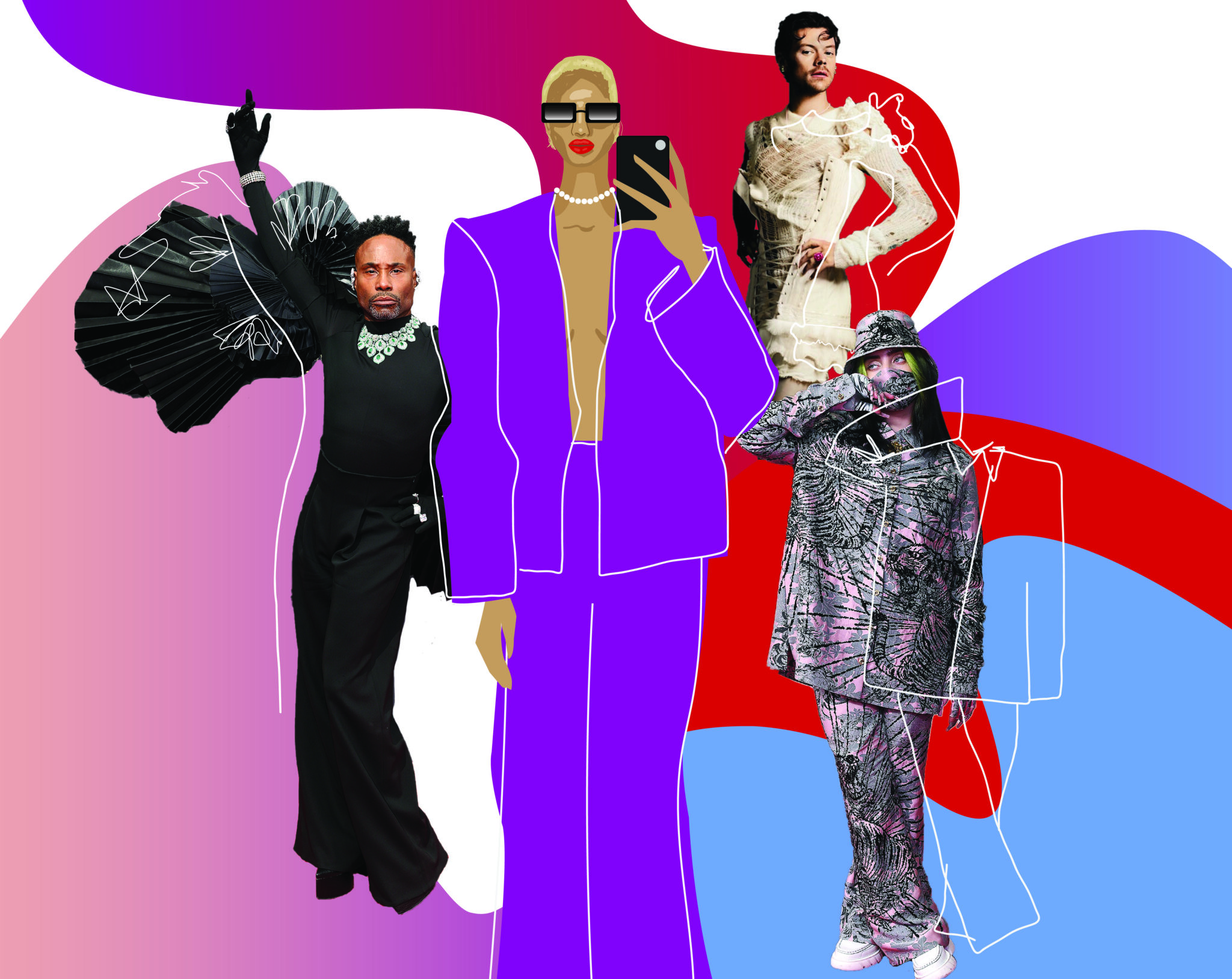GRAPHIC DESIGNER: Charlotte Lake
COPY EDITOR: Madeline Liao
Unisex is no longer a part of the minor genres in fashion and has evolved into being adopted by the majority of fashion lovers.
However, concerns about gender identity and self-expression are increasingly raised as Gen Z consumers become a major driver of the fashion industry. Gender dichotomy will soon become unsatisfactory to an increasing segment of this young generation, who is looking for more stylistic alternatives that transcend beyond bounds. The hype surrounding androgyny is considered as a lucrative movement which paved the way for new problems relating to gender identity and the representation of queerness.
Through the deconstruction of gender, this article will dive into how gen Z is stepping into androgyny and redefining the fashion industry as a whole as it will examine the history of unisex fashion, give current context, and provide a critical analysis of its current and potential future impact.
A brief history of breaking down the binary line
The term ‘unisex’ was coined the 1960s and based on a Latin prefix “unus”, meaning one or single. As it emerged to fashion, unisex clothing was used with intention to “blur or cross gender barriers,” but ultimately still offered “uniformity with a masculine twist.”
Under the umbrella of pop culture and cinema stars, androgynous fashion has entered the mainstream. Apart from David Bowie, the nostalgic disco time also reminds us of icons like Boy George and Prince, who stirred up a rave in fashion with a bold eccentric sense of style.
Androgynous fashion also began to acquire prominence in luxury fashion brands and runways. Emerging designers of those times such as Pierre Cardin and Andre Courreges began to produce much more box-like shaped clothing lines.
Redefining Androgyny
However, boxy silhouettes and looking ambiguous is not all there is to unisex fashion. As defined in a New York Times article on teenage androgyny fashion, it is the freedom of choosing what to wear without the confines of gender. Slow strung bell-bottoms, flouncing chiffon dresses worn by both men and women should be the definition of “unisex” – a unification in fashion to accommodate the fluidity of genders.
But how to strike a balance between fashion and gender fluidity? For many Gen Zs, this widespread fashion phenomenon is about “playing with masculinity and femininity while maintaining it at the same time.” L. Nguyen, who is nonbinary, typically begins her shopping by looking for basic clothes that best suit her body type. She will then move to the men’s section of a store to select more masculine items such as chunky boots, oversized tees and blazers. Nguyen, who uses the gender-neutral pronoun they, mostly invest in resale apps like Depop and thrift stores for vintage products by size rather than gender.
There are many other consumers who share the same interest with Nguyen. Gender-neutral fashion is greatly inspired by Gen Z customers, who are more outspoken about who they are and what they believe in. As a result, fashion businesses are constantly working to better understand Gen Z and create new strategies to appeal to the new generation.
Brands are seen making lines of clothing that apply the ‘one-style-fits-all’ approach rather than gender-specific, from newly-established brands like Les Girls Les Boys, Tomboy X and Wildfang, mid-range names H&M to luxury fashion houses like Gucci and Balenciaga. They all started with hope to change the perceptions of gender norms. The “Gucci Style” has since been a popular TikTok trend among Gen Zs.
“Playing with the constructive nature of gender, the MX project underlines the performative nature of what we wear, presenting masculinity and femininity as relative concepts,” Gucci said in a CNBC report.
Boxy silhouettes and looking ambiguous is not all there is to unisex fashion.
The New World’s Problem
As the ‘androgynous appearance’ becomes more prominent in the media, these brands and their lingering aesthetics are being lauded as creative trendsetters. The common denominator is that they have all been donned by non-binary mainstream celebrities. This may lead to the growing debate over cis influencers benefiting from the unisex aesthetics while ignoring many non-binary individuals who paved the way. The media played an evident role in shaping the influence on young generations with the tendency to grant cis-gender influencers undue credit for these aesthetics.
A brief interview with L. Nguyen unveils their thoughts on the subject. “I believe that’s almost how marketing or advertising works these days. Many brands seek minorities to represent something and they understand how we as a consumer care about them, as society strives to foster more inclusion and diversity in every aspect of life, including fashion. Instead of treating people normally, giving too much credit for non-binary celeb in fashion is a way to treat them (non-binary folks) abnormally, more special.”

























